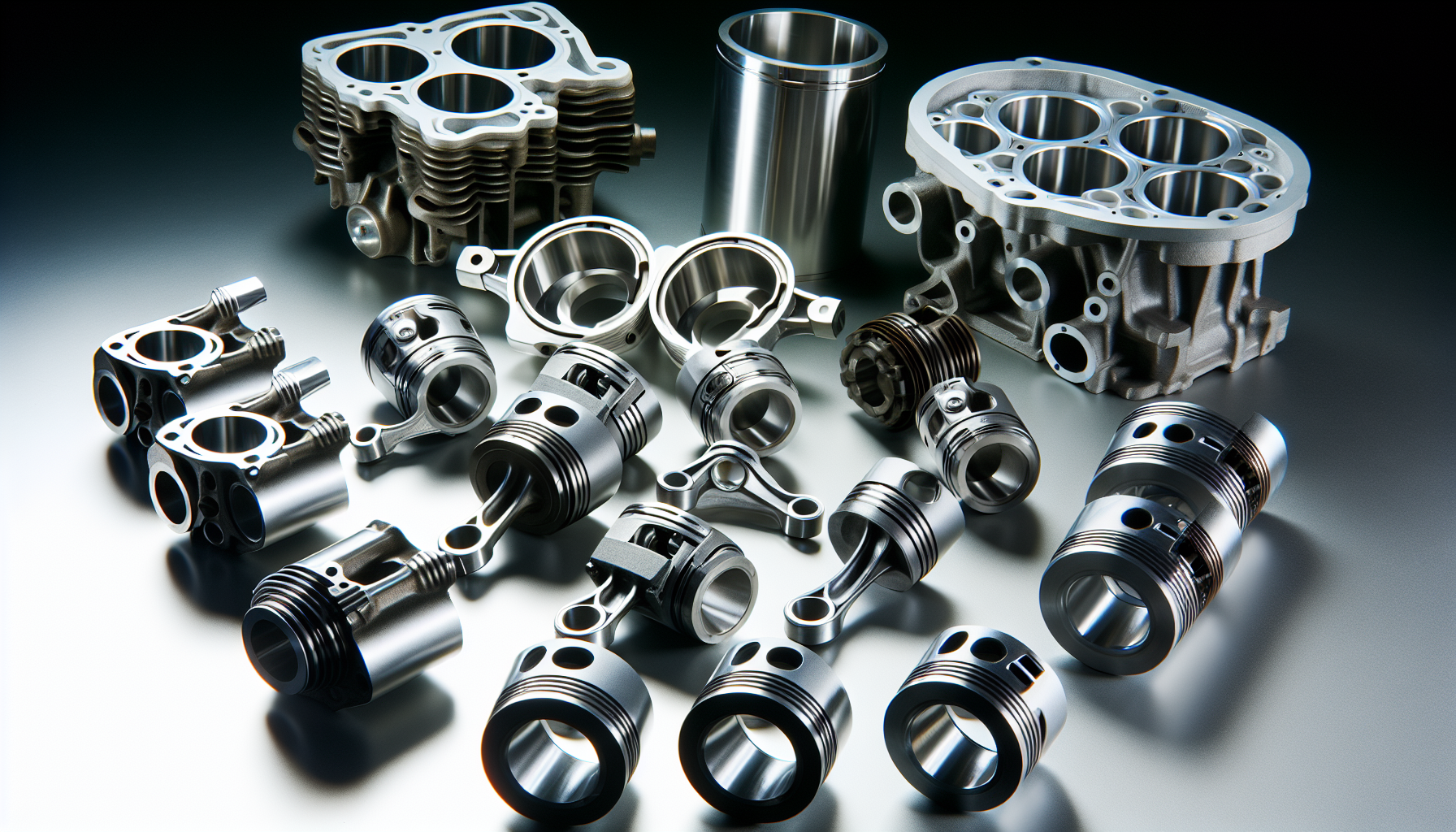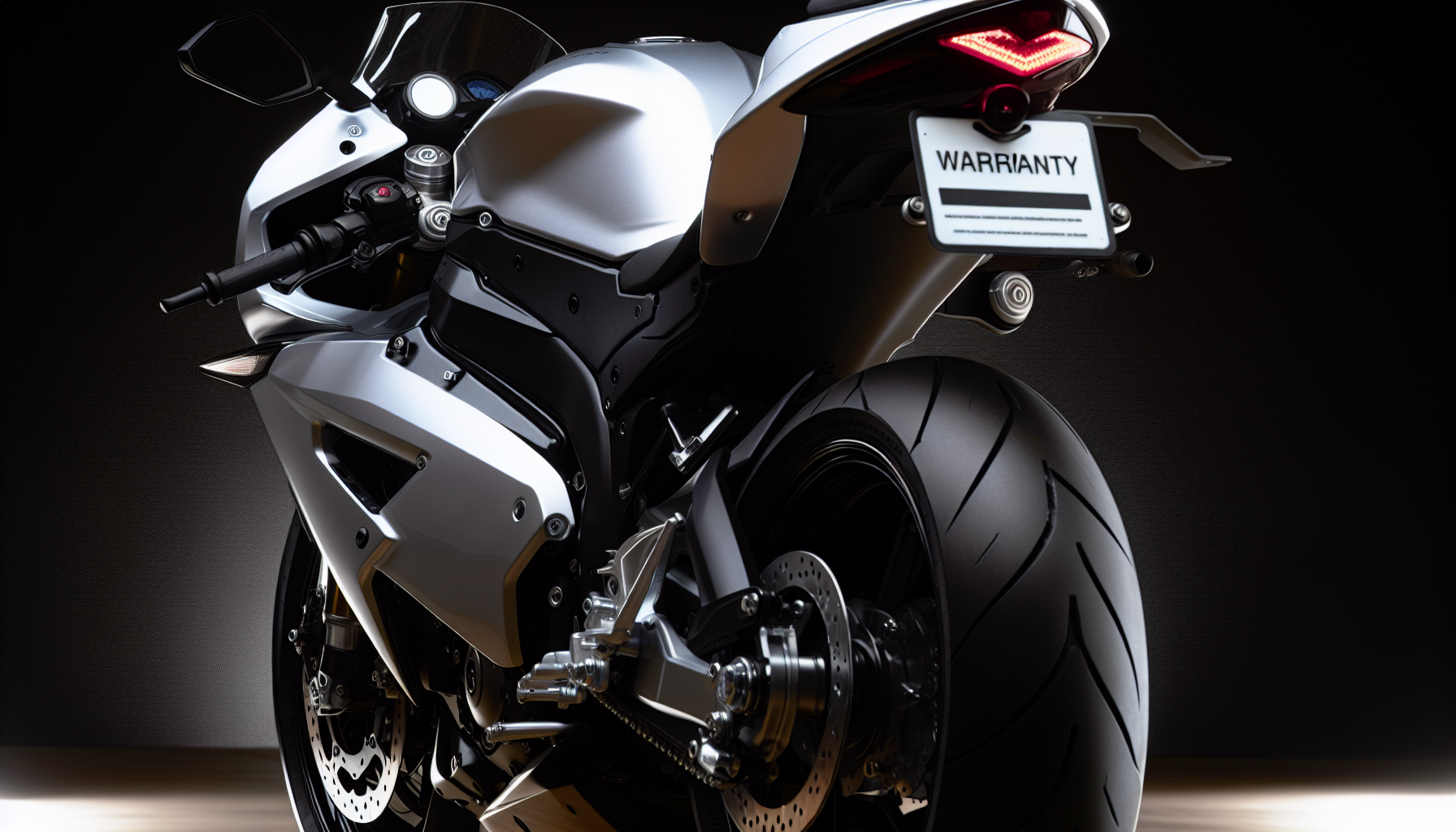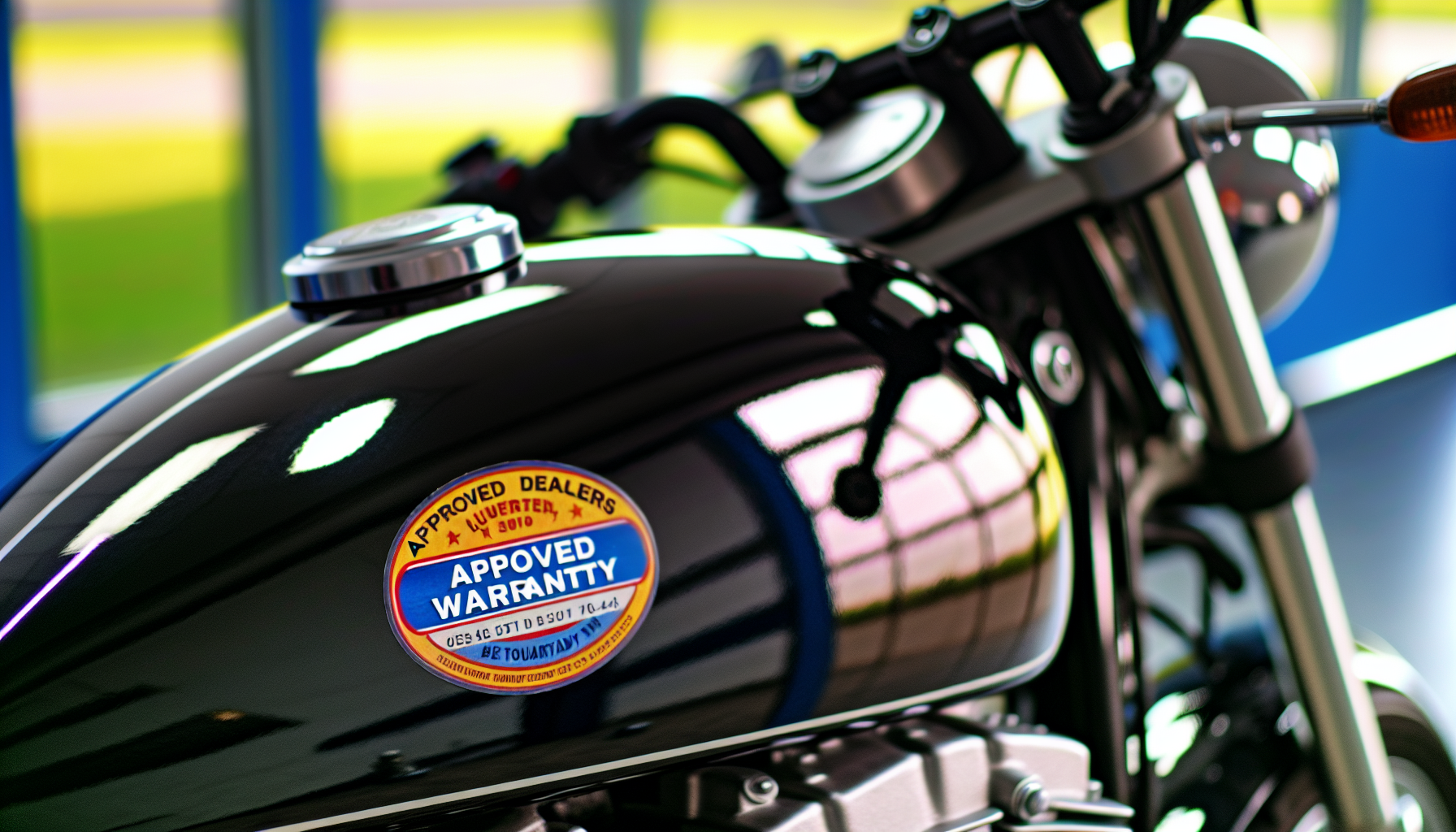Choosing the right type of motorcycle warranty can be as critical as selecting the bike itself. From new bike warranties to pre-owned and extended options, this article clearly defines the types of motorcycle warranties, ensuring you understand the coverage, limitations, and perks of each so you can ride with confidence.
Key Takeaways
- Motorcycle warranties protect against mechanical breakdowns, covering parts and labor costs for specific components, but exclude items subject to regular wear and tear, such as batteries and brake pads.
- Manufacturer warranties for new bikes generally last 2-3 years or until a specified mileage is reached, and extended warranties can offer continued protection, often with added services such as roadside assistance and trip interruption reimbursements.
- Pre-owned motorcycle warranties, brand-specific, and aftermarket warranty options vary in duration, coverage, and cost, with some being transferable to enhance resale value, while users should be cautious of limitations and exclusions that can void warranties.
Decoding Motorcycle Warranty Basics

Motorcycle warranties, also known as motorbike warranty, act as a shield against mechanical breakdowns, covering components against defects in material or workmanship, and shouldering the burden of parts and labor costs. With motorcycle warranty coverage, these warranties usually have a specific duration, and some even offer unlimited mileage within that period, keeping you on the road, worry-free.
However, not all parts are covered. Certain items that naturally wear over time, like:
- batteries
- filters
- spark plugs
- brake pads
are typically excluded from the warranty. Knowing what your warranty covers is key in managing expectations and avoiding surprise repair bills.
New Bike Manufacturer’s Warranty

When you get your hands on a new bike, it typically comes with a manufacturer’s warranty. This warranty includes repair or replacement of almost all parts and electrical components that become faulty through no fault of the owner. The standard warranty offered by manufacturers on new motorcycles usually lasts around 2-3 years or until the motorcycle reaches a specified maximum mileage, whichever comes first.
While manufacturer’s warranties offer comprehensive coverage, they do have their limits, especially when the manufacturer’s warranty expires. Subsequent sections will discuss the range of this coverage along with its duration and mileage limits.
The Scope of Coverage
Motorcycle manufacturer warranties broadly cover essential systems, including:
- Engine
- Gearbox
- Clutch
- Cooling system
- Electrical components
- And much more
However, to maintain the warranty, servicing typically needs to be performed by an authorized dealer. Some manufacturers, like KTM, allow self-service if detailed records and receipts are kept.
Be wary of modifications and the use of non-OEM parts. These can void the warranty, especially if such changes lead to a failure. Make sure any modifications are sanctioned and adhere to the manufacturer’s guidelines to maintain your coverage.
Understanding Duration and Mileage Limits
The duration and mileage covered by your warranty can vary. Manufacturer warranties usually have a time period defining how long the coverage lasts. For instance, Indian Motorcycle provides a two-year factory warranty from the date of purchase.
Monitor both time and mileage to prevent premature loss of coverage.
Extended Motorcycle Warranty: The Added Shield

As the saying goes, “All good things must come to an end,” and unfortunately, this includes the manufacturer’s warranty. But fear not – extended warranties are here to save the day. These plans prolong protection beyond the original warranty’s term, offering peace of mind and guarding against repair costs.
Extended Service Plans (ESPs) provide nearly complete coverage for vital motorcycle components like engines, transmissions, and fuel systems. High-performance motorcycles that require more maintenance can especially benefit from extended warranty plans, which may include a deductible per visit. Subsequent sections will cover the selection of an extended warranty provider and the advantages of this additional protection.
Choosing an Extended Warranty Provider
Finding an extended warranty provider offering customizable plans is vital. This allows you to align the warranty coverage with your individual lifestyle needs and budget. Reputable providers, such as the American Auto Shield Motorcycle Protection Program, Discount ESP, and Motorcycle Agent, offer extended warranties with a variety of cost-saving options.
Insurance comparison quotes can help you evaluate warranty costs and plan your finances accordingly. It’s also important to understand the provider’s claims process, which may include reimbursement after repairs or direct payment to the repair shop. This ensures efficient and satisfactory handling of any future claims.
Coverage Perks
Extended motorcycle warranties often come with additional perks that go beyond basic coverage. Services like 24/7 roadside assistance, including towing, jump starts, and fuel delivery, can be a lifeline when you’re stranded on the open road.
If you’re far from home and your bike breaks down, some warranties offer the following benefits:
- Trip interruption reimbursement, covering motel and restaurant costs
- Vehicle rental reimbursement, compensating for the use of a rental while your motorcycle is being repaired
- Protection for high-end electronics, offering comprehensive part and system coverage
These features can provide peace of mind and financial protection when your bike needs repairs, helping you save money.
Pre-Owned Motorcycle Warranties

Motorcycles, like fine wines, can get better with age. But, just like vintage wines, pre-owned motorcycles may come with their caveats. Approved dealers typically offer warranties for used motorcycles, with a typical duration of 12 months.
However, these warranties often come with policy exclusions that buyers need to be aware of. Comprehending the range of coverage and exclusions is key in assessing the potential cost savings of warranties for used motorcycles. Subsequent sections will further explore the realm of used bike warranties.
Dealer vs. Third-Party Warranties
Dealer warranties for used motorcycles often come with the benefit of being directly associated with the manufacturer. This can provide a level of assurance as the bike has been inspected and refurbished to a certain standard.
On the other hand, third-party warranties offer more flexibility and customization, covering areas that might not be available through dealer warranties. While they may cover components for a longer period, be wary of coverage limitations and exclusions.
Dealer warranties may initially seem more expensive, but their relationship with the manufacturer may offer more value in the long run.
What to Watch for in Used Bike Warranties
Warranties for used motorcycles typically exclude coverage for parts subject to wear and tear such as brake pads, spark plugs, and brake shoes. They also generally won’t cover certain types of damage including those from racing, misuse, or deterioration of parts like rubber and plastics over time.
Motorcycle warranties typically exclude coverage for:
- Routine maintenance
- Damage from natural disasters, fire, or collisions
- Using non-genuine parts or fluids not approved by the manufacturer
- Failing to adhere to periodic maintenance requirements set by the manufacturer
These actions can lead to your warranty being voided.
Specialty Warranties: Brand-Specific and Aftermarket Options

Just like motorcycles themselves, warranties come in all shapes and sizes. Specialty warranties, such as those offered by Harley-Davidson, offer unique coverage that complements standard warranty policies. Moreover, information on brand-specific warranties from other manufacturers like Honda would be beneficial for a comprehensive understanding.
On the other hand, aftermarket warranties can cover components not included in standard policies. Subsequent sections will offer a detailed exploration of these brand-specific and aftermarket warranties.
Brand-Specific Warranties
Harley-Davidson offers a variety of limited warranties covering products like Parts & Accessories and MotorClothes, alongside the bike itself. Aftermarket warranties for Harley-Davidson products, provided by manufacturers like Athalon and Wiley X, come with their own claim processes.
On the other hand, Indian Motorcycle’s Promotional Limited Warranty specifically excludes normal wear items and failures that have resulted from misuse or inadequate maintenance. Honda also offers the HondaCare Protection Plan, which provides comprehensive coverage and extends to anyone riding with the owner’s consent.
Aftermarket Warranty Benefits
Aftermarket warranties offer extensive coverage for various motorcycle systems not typically covered by basic warranties. These warranties offer:
- Flexible terms, providing up to 5 years of coverage for both new and used motorcycles, with unlimited miles
- Benefits like 24/7 claims service, towing/road service, trip interruption, and low deductibles
- A 100% money-back guarantee if the plan is canceled within a specified period, typically around 15 days from the application date.
Warranty Add-Ons: Customizing Your Coverage
While standard warranties offer great protection, there’s always room for more. Warranty add-ons allow riders to customize their coverage beyond basic warranty protection. Options like Tire and Wheel Protection and the Performance Plus Package are examples of add-ons that can be purchased separately.
These add-ons can extend coverage to areas not typically included under standard warranties, such as issues with tires, wheels, and enhanced performance components. The subsequent sections will take a closer look at these optional coverage components and conduct a cost versus benefit analysis of these add-ons.
Elective Coverage Components
Aftermarket motorcycle warranties offer extensive coverage beyond standard warranties. These elective warranty components may include:
- All essential mechanical parts
- All essential hydraulic parts
- All essential electrical parts
- All essential electronic parts necessary for the motorcycle’s operation.
Coverage through providers like Eagle Guardian can therefore present a more exhaustive protection for various motorcycle systems, including:
- Engine
- Transmission
- Suspension
- Electrical components
- Fuel system
- Cooling system
- Brake system
- Exhaust system
This extensive coverage, often referred to as the perfect warranty, can provide peace of mind, knowing that even the most unexpected of repairs could be covered.
Cost vs. Benefit Analysis
While extended warranties can provide peace of mind, they are often designed to be profitable for the provider rather than offering a financial benefit to the buyer. However, they can sometimes be worthwhile if they are negotiated to a reduced cost, as they are often significant profit items for dealerships.
For motorcycle owners not mechanically inclined or those unsure about their bike’s reliability, extended warranties can offer peace of mind despite not being financially advantageous. Some motorcycle owners view extended warranties as similar to forced savings accounts for repairs, but without the benefit of reclaiming unused contributions if the bike remains problem-free.
Transferability and Its Advantages
One advantage often overlooked when discussing warranties is their transferability. Transferable warranties can enhance the appeal of a motorcycle to potential buyers, as they promise continued warranty coverage after the sale.
The resale value of a motorcycle can be significantly increased if it comes with a transferable warranty, making it a financially beneficial feature for sellers. Brands like Honda offer transferable extended warranties, which can serve as an additional selling point by increasing the motorcycle’s market value. However, keep in mind that not all protection plans are transferable, which can influence the decision-making process for both sellers and buyers.
Navigating Warranty Claims and Repair Facilities
When it comes to warranty claims, it’s important to select authorized dealers. They are qualified to process claims for parts, accessories, and apparel, ensuring that your claim is properly handled.
The warranty claim process at Harley-Davidson authorized dealers can include repair of the item, replacement, or credit issuance depending on the specific case. In the following sections, we’ll provide some tips for filing a warranty claim and discuss how to choose the right repair facility.
Claim Filing Tips
Providing a comprehensive repair order that includes the original complaint and the proposed solution is vital when filing a warranty claim, as it helps to streamline the process. Also, keep replaced parts after a repair until the warrantied parts are in place and for a time thereafter in case the manufacturer requests an inspection.
Choosing the Right Repair Facility
Selecting a repair facility authorized by the extended warranty provider or the motorcycle manufacturer is crucial for warranty work. This ensures the repairs are recognized and covered under the warranty terms.
Choosing a repair shop that is part of a network can lead to faster claims processing and provides assurance that repairs will be covered in accordance with the warranty agreement.
Summary
Motorcycle warranties offer an essential safety net, protecting riders from unexpected repair costs. From the comprehensive coverage of manufacturer’s warranties to the added security offered by extended warranties, every rider can find the perfect warranty to suit their needs. Whether you’re buying a shiny new bike or a vintage beauty, understanding the ins and outs of motorcycle warranties can save you money, time, and unnecessary stress, leaving you free to enjoy the open road.
Frequently Asked Questions
How does motorcycle warranty work?
A used motorcycle warranty covers mechanical, electrical, and electronic parts against sudden failure, paying for repair or replacement costs within a specific time frame.
What is basic warranty and extended warranty?
Basic warranties provided by the manufacturer cover certain vehicle problems, while extended warranties or service contracts sold at an additional charge cover additional mechanical and electrical issues. These are separate from the manufacturer’s warranty.
What kind of warranty does Harley-Davidson have?
Harley-Davidson offers a 2 year, unlimited warranty on all new motorcycles, while used motorcycles within the original warranty terms are covered until it expires. This information can help you understand the warranty coverage for both new and used Harley-Davidson motorcycles.
What does a motorcycle warranty cover?
A motorcycle warranty covers components against defects in material or workmanship, including parts and labor costs, but does not cover normal wear items like batteries, filters, and brake pads.
What is a transferable warranty?
A transferable warranty allows the warranty coverage to be transferred to a new owner when the item is sold, providing continued protection for the buyer.


